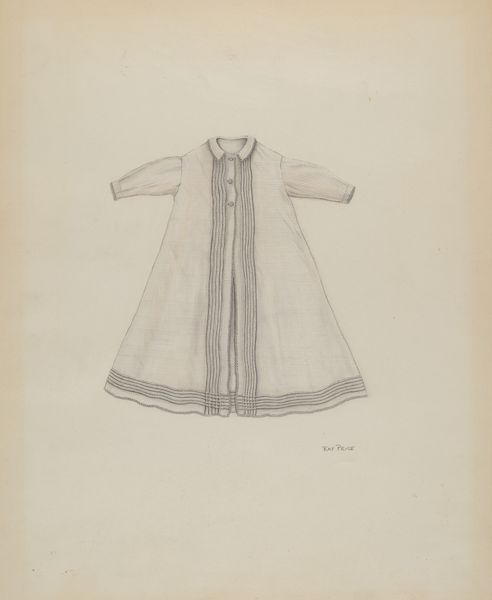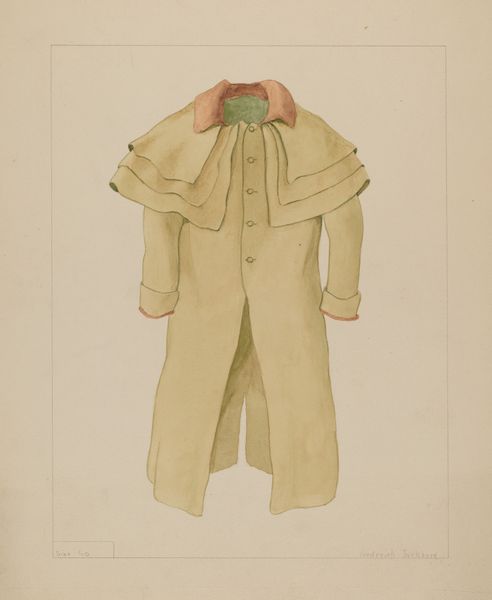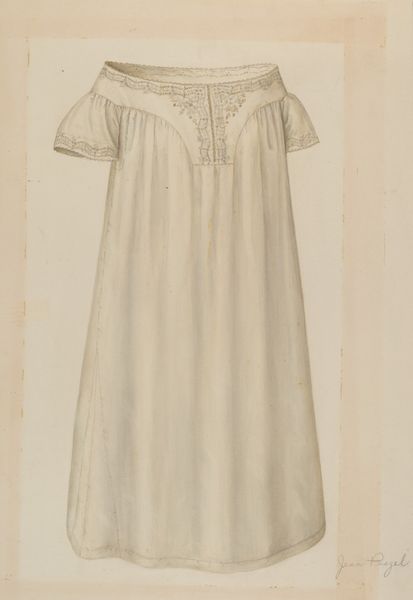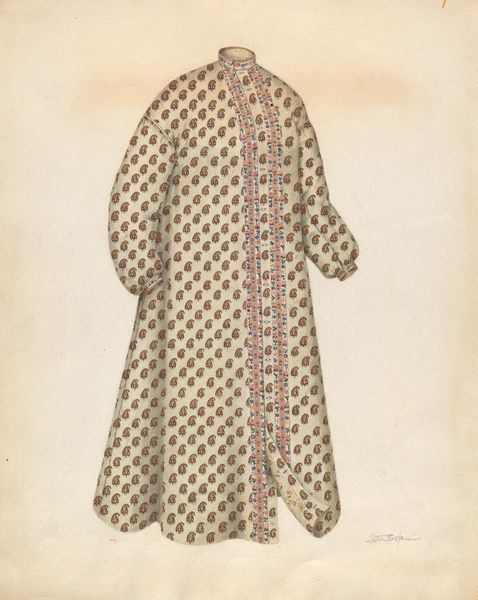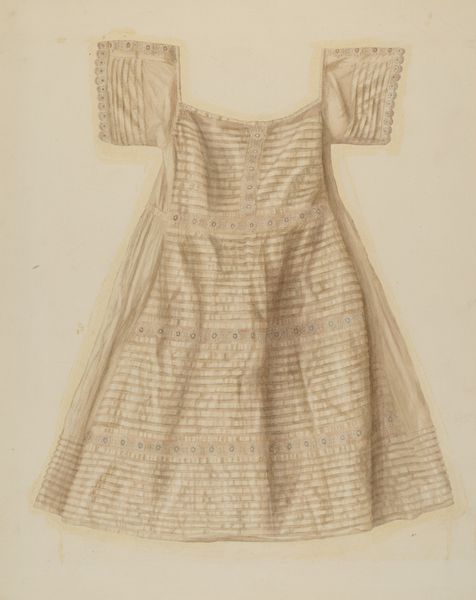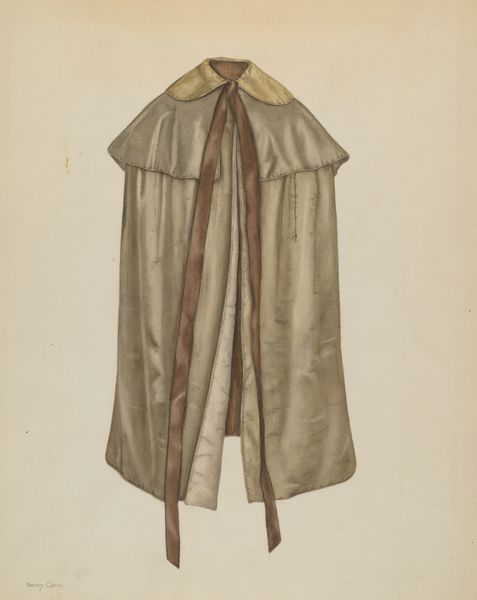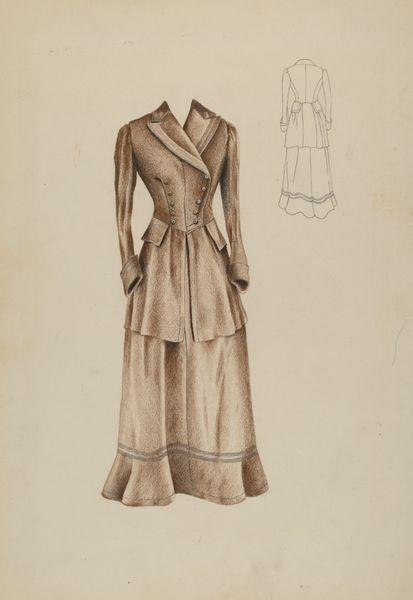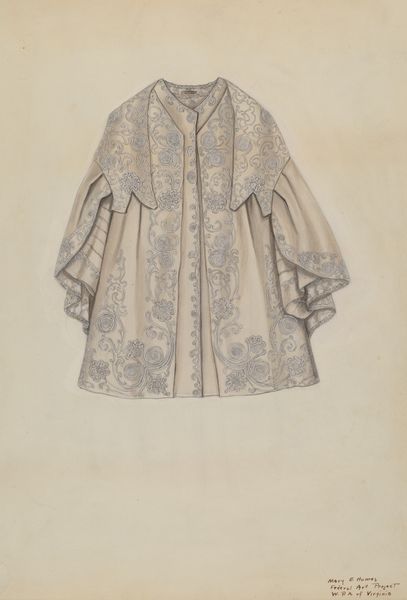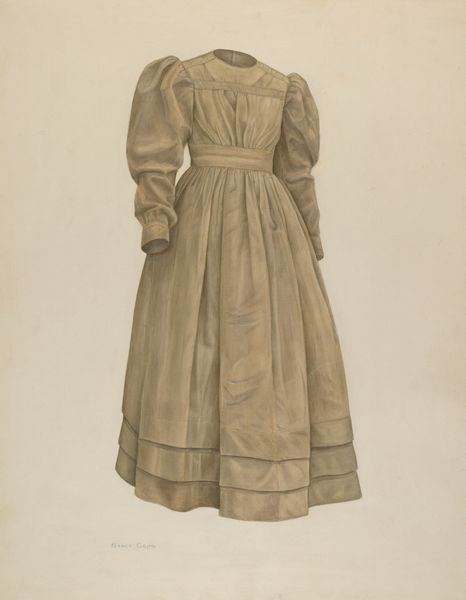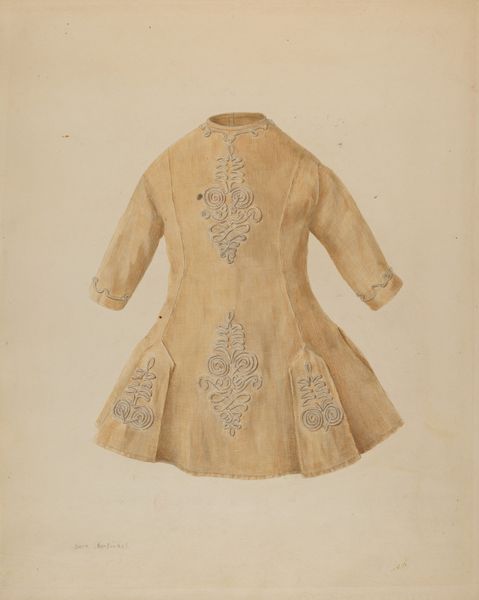
drawing, paper, pencil
#
portrait
#
pencil drawn
#
drawing
#
pencil sketch
#
paper
#
pencil
#
pencil work
#
watercolor
Dimensions: overall: 35.4 x 23 cm (13 15/16 x 9 1/16 in.) Original IAD Object: 20" long; 54 1/4" wide
Copyright: National Gallery of Art: CC0 1.0
Editor: Here we have Roberta Spicer’s "Girl's Coat," from around 1937, done in pencil and watercolor on paper. It’s deceptively simple, almost a technical drawing. I’m curious – what historical context am I missing that shapes the significance of what seems like a mere rendering of a garment? Curator: That's an insightful observation. While on the surface, it appears as a straightforward depiction, consider the date. 1937. This drawing exists within the late Depression era, where clothing, especially for children, carried immense socio-economic weight. How do you think displaying or commissioning an image like this interacted with or resisted that socio-economic reality? Editor: I suppose, rendering a single garment romanticizes what having enough fabric, adequate tailoring, even buttons signifies, a sense of simple dignity so hard to come by in that era? But wouldn't showing it also remind people *of* the poverty all around? Curator: Precisely! It becomes a potent symbol loaded with complex messages. Was it intended as aspiration? A document of what *was*, a hope for what could be? Who might have owned or been commissioning fashion images such as this, and for what purpose? Considering the artist, her social standing, her possible ties to manufacturing... these angles drastically alter its potential narratives. Editor: I hadn't considered those kinds of angles at all, just its surface appearance. I guess I need to move past simply seeing what's literally represented, to the world that created the representation. Curator: Absolutely. And in doing so, we start to unpack the politics of imagery itself. It isn't simply *of* something, it *does* something, particularly through how it is consumed within its time. Editor: Right, so my initial "simple" becomes complex, a product of a certain economic moment, aimed at very specific sectors of the population, imbued with a real class agenda that probably supported those in power. Thanks! It definitely reframed the drawing in my mind. Curator: Indeed. It's a good reminder of the critical lens we must apply. Apparent simplicity often conceals the most compelling historical narratives!
Comments
No comments
Be the first to comment and join the conversation on the ultimate creative platform.
